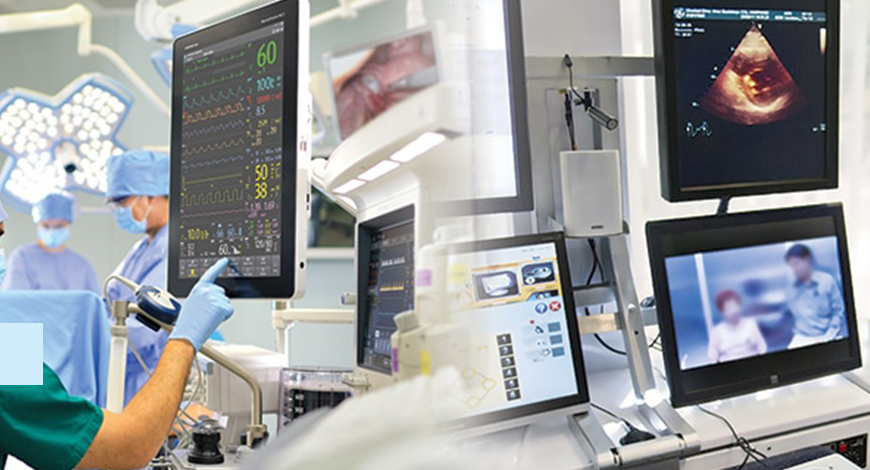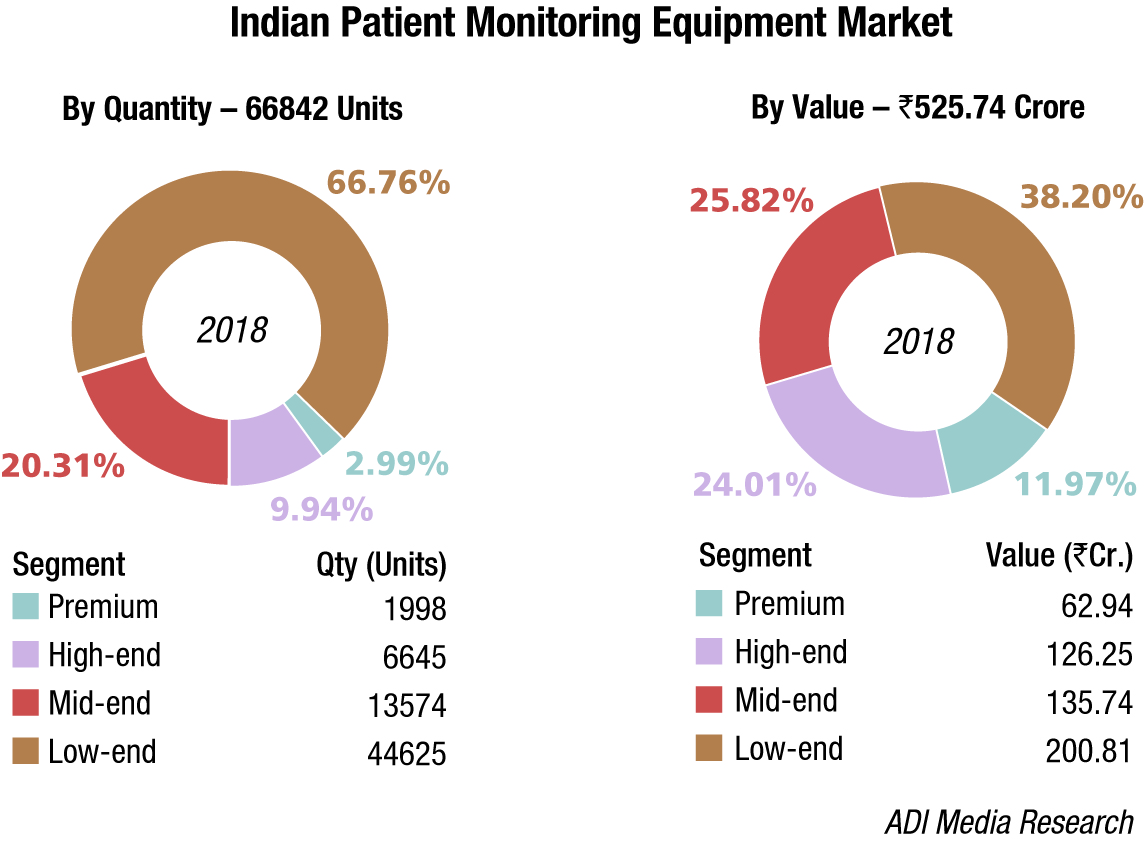Patient Monitoring Equipment
Patient Monitoring Moving Toward A Value-Based Ecosystem

Providers are constantly looking for accurate, transparent processes and smarter, integrated solutions so that the industry may experience more consistent patient care, seamless patient transitions, and improved outcomes.
Patient monitoring has evolved from ad hoc to continuous monitoring of multiple parameters, causing a surge in the amount of unprocessed and unorganized data available to clinicians for decision making. To extract actionable information from this data, healthcare providers are turning to big data analytics and other analysis solutions. Predictive analytics is becoming a particularly important technology, as it not only presents the current state of the patient’s health but also predicts future illnesses. The success of this technology, among many others, attracted USD 566.3 million in investments in 2018, estimates Frost & Sullivan.
Despite technology innovations, gaps still exist that affect clinicians’ ability to provide the highest-quality patient care. Technology – and the infinite amount of data it generates – comes with its own set of challenges in the hospital, and when patients move back home.
Indian market dynamics
The Indian market for patient-monitoring equipment in 2018 is estimated at Rs 525.74 crore, and 66842 units.
The premium segment has an 11.97 percent contribution by value and a 2.99 percent contribution by volume. The 100 units of super-premium systems, selling at an average unit price of Rs 130,000, have been clubbed with the premium segment. High-end systems constitute 24 percent share in value terms and 9.94 percent in volume terms. Although the belly of the segment continues to be competitively priced systems, the mid-end and low-end segment dominate with a combined share of 87.07 percent in volume terms and 64 percent in value terms; while there is a gradual shift in favor of mid-end equipment.
| Major Vendors in Indian Patient Monitoring Equipment Market – 2018* |
||||
|---|---|---|---|---|
| Tier I | Tier II | Tier III | Tier IV | Others |
| Philips and Mindray | GE and Nihon Kohden | BPL and Schiller | Skanray, Edan, Drager, and Spacelabs | Medtronic, Nidek, Yonker, GMI, Shenzhen Biomed, and EMCO |
| *Vendors are placed in different tiers on the basis of their sales contribution to the overall revenues of the Indian patient monitoring equipment market. | ||||
| ADI Media Research | ||||
Mindray has had an excellent 2018. Philips is now sharing the Tier-I rank with the company, albeit Mindray has to still catch up with Philips. The success in tenders invited by the state governments was a major contributor. Mindray was awarded 1146 units by HLL, 200 units by OMSCL, 200 units by IGIMS, 150 units by BMSCL, 125 units by APSMIDC, 400 units of high-end and mid-end by KMSL (BPL was awarded the low-end 200 units), and 350 units by MPMSCL, among others. Medanta, Gurgaon, procured 285 units from Mindray too. The company is one of the bidders for 2500 units re-tendered by UPMSCL. Nihon Kohden too had a good 2018.
The government hospitals continued to be large buyers in 2018, as they equip the MCH hospitals planned by the government. The trend is expected to continue in 2020. The advent of remote patient monitoring has served as a major landmark to improve patient outcomes and reduce hospitalization costs. These tools consist of mobile technologies that extend to the patient-caregivers beyond a traditional clinical setting, keeping an eye on chronic illnesses and helping consumers track their symptoms. With the recent significant rise in the number of individuals suffering from heart-related disorders, there is an increased importance of maintaining health.

Way forward
As the healthcare industry shifts its focus to improve the patient experience across the healthcare continuum, providers are looking for programs that make seamless transitions for patients leaving the hospital, keeping the patients’ health and safety at the top of mind. Since reducing readmissions continues to be a focus for health systems, clinicians need to leverage remote-monitoring technologies to ensure that when patients are discharged, they will recover in the comfort of their own home with minimal risk of complications.
Remote-monitoring technologies, such as connected sensing, can help ensure that a patient’s vital signs are being consistently monitored even outside of the hospital, enabling clinicians to contact the patient remotely from the hospital to address any irregularities. Connected sensing technology cannot only improve the patient-recovery time, but also keep the patient safe at the point of care.
Connected care is critical for patients with chronic conditions, such as sleep apnea and COPD, as it can lower the cost burden associated with these conditions, as well as help increase the patient’s adherence to treatment. By staying connected with their providers, connected care allows a patient-management or engagement service to motivate the patient to stay adherent to their treatment regimen in the comfort of their own home. These insights allow patients to track their progress or set reminders to take action, as well as receive motivational messages from their physicians to encourage them to stay on track.
Having solutions in the healthcare industry that offer remote monitoring, coaching, and engagement is important for adherence, but combining all three applications is what makes the difference in patient compliance can ultimately change how we deliver personalized care. The move toward value-based outcomes puts heightened emphasis and expectations that quality patient care is continued in the hospital up till when a patient is discharged. Providers today need accurate, transparent processes, and smarter, integrated solutions to help clinical staff make faster, more consistent decisions based on patient condition and history. Connected care technologies can help with this by providing continuous monitoring throughout the hospital, aggregating data into clinical-decision insights, implementing smart alarms, and improving patient’s recovery at home. Once the current gaps are closed in patient monitoring with connected technology, industry will experience more consistent patient care, seamless patient transitions, improved outcomes, and will be one step closer to a value-based care ecosystem.











